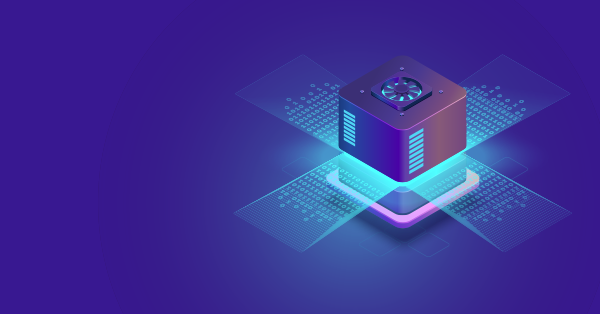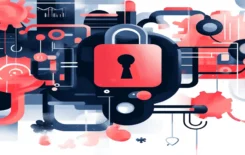What You’ll Learn
- The basics of containerization and how it applies to database management.
- The main benefits of database containerization, including CI/CD compatibility, multi-cloud flexibility, and cost efficiency.
- The primary challenges and cons of database containerization, such as security risks and lack of isolation.
- Why database automation is essential for managing database containers effectively.
- The role of database containers in modern DevOps environments and how they integrate with automation tools.
Database Containerization In a Nutshell
Before we dive into specifics, it’s important to understand what exactly is containerization and why it is gaining so much popularity today.
Containerization is basically a lightweight alternative to Virtual Machines (VMs). It involves encapsulating applications in containers with independent operating systems. The Container borrows its name from logistics-related Packaging Containers. App containers refer to the packaging of software.
Containers provide process and user isolation for application multi-tenancy. Each container includes all the relevant software dependencies to become an immutable application package that can then run without being manipulated. Containers are also designed to be easily discarded and replaced.
In other words, containers allow you to package apps together with libraries and other dependencies, while providing isolated environments to run services.
What is a DB Server Container?
The DB Server already supports multiple named instances with impressive capabilities. However, Database server containers are also on the rise.
Database server containers are gaining popularity because they are fast, simple-to-use, and very compatible with automation tools. This helps automate delivery of production data environments for Dev and QA, with a significant reduction in the number of Database server hosts being used.
So how do these containers actually look like?
Database server container is defined by elements called Dockerfiles, which basically define a sequence of steps required to build it. Dockerfiles begin with a “base image,” followed by databases and SQL scripts. It’s also possible to use snapshots and database clones when required.
Databases can be copied and run within the container file system, or mounted to the container directly by using the MOUNTDB command.
3 Main Pros of Database Containerization
Besides the positive speed and efficiently characteristics it possesses, database containerization can have some huge benefits for you.
1. CI/CD Friendly
Database Containers are extremely consistent, which is very important while creating and maintaining an agile environment. Furthermore, these containers are proving to be very effective with approaches like Continuous Integration and Continuous Delivery (CI/CD).
2. Multi-Cloud Compatibility
More and more companies today are leaving the on-premise format or creating hybrid pipelines to enable the seamless scaling up of their operations during peak-times. Not only can containers operate smoothly on the cloud, but they can do so on multiple cloud platforms.
The widespread popularity of the Docker image format further helps with portability. You can now use containers wherever you wish to operate.
3. Cost Efficiency
Containers are very cost-efficient. In spite of the initial investment required for memory, CPU, and storage, it is possible to run many containers on the same infrastructure. They also integrate better with third party solutions (i.e – replication, mirroring, etc.), hence saving time and money.
Did You Know?
As per a recent Cision report, the global container orchestration market size is expected to USD 743.3 million by 2023.
3 Main Cons of Database Containerization
The aforementioned advantages are quite significant, but they also come with a fair share of potential issues that need to be taken into consideration.
1. Security
Since all of the database containers usually share a common host, it becomes potentially easy to penetrate to the system due to the lack of isolation. Traditional security methods can be helpful in detecting such breaches, but this is by no means an air-tight methodology, something that needs to be clear. To address security concerns with database containers, implement strict security protocols at the container level, such as using container-specific firewalls and limiting the exposure of sensitive data to minimize vulnerabilities.
2. Lack of Isolation
Another issue with a container is the lack of OS flexibility which means containers must be of the same OS as of the Base OS. It can also become challenging to monitor database activity when hundreds (and potentially thousands) of containers are running on the same server.
3. New Technology
As mentioned earlier, the use of Database Containers is a new practice and the methodology has not yet matured. There are still many aspects that need to be developed and polished before database containerization becomes a must-have component in every ecosystem.
Database Automation – No Longer a Matter of Choice
Now that we have established that the world is gravitating towards database containerization, it’s also critical to understand the importance of automation when planning to use containers.
Despite all of the aforementioned advantages, Database Containers have one inherited problem – they are not persistent. If we need to use containers in production, it means that they are tied to a storage that needs to remain persistent in order to control and access latest and current production data. They are basically becoming glorified Virtual Machines (VMs).
In other words, Database Containers simply can’t be deployed and left alone. To use them to scale up and enjoy their benefits, it’s highly recommended to start with the left of the pipe (development) where agility is critical and spinning container up and down is a daily experience, while continuing the use of persistent data to the right of it (production). Doing that requires a missing part to this recommended puzzle.
You guessed right. This is where database automation comes into play.
There has to be a comprehensive database automation solution to overlook the code changes in real-time, while ensuring smooth management and shipping to the various stages of the development pipeline. When using database containers, ensure you’re integrating them with a comprehensive automation tool to manage changes, version control, and deployments in real time. This prevents manual errors and boosts efficiency. This is basically the backbone you require while implementing database containerization.
Furthermore, release issues and database failures are not fully avoided with DB Containers. Developers need a comprehensive automation tool to manage database changes and versions. It is extremely crucial to apply all development changes and assess the database versions that the container is presenting.
All of this can be a complicated and error-prone process when done manually, especially at scale. A proper solution can be the final link in the chain to connect container orchestration platforms and databases effectively. If you’re looking to containerize your database, make sure you are automating properly.
Key Takeaways
- Database containerization enhances CI/CD workflows by providing consistency, portability, and multi-cloud compatibility.
- Containers are cost-efficient, allowing multiple containers to run on the same infrastructure, which can save on resources.
- Security and lack of isolation are key challenges with database containerization, particularly when containers share a common host.
- Database containers are not persistent, which is why automation is crucial for managing production data and ensuring smooth development cycles.
- Although a newer technology, database containerization continues to evolve and plays an important role in scaling operations where time-to-market is critical.







